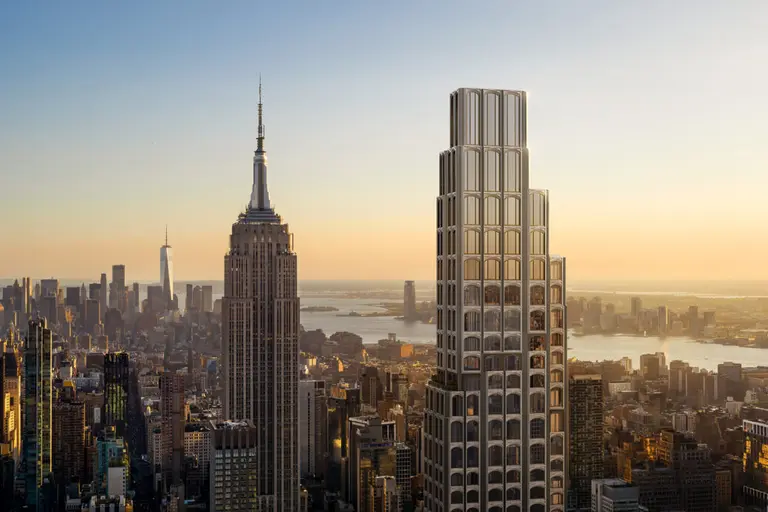City Defends Supertalls, Won’t Limit Size of Midtown Towers

The Department of City Planning announced that although it shares residents’ concerns about the effects of the new crop of supertall towers rising near Central Park, it does not intend to lower the size limits on buildings in the dense Midtown district. Crain’s reports that department director Carl Weisbrod said in a written response to elected officials on August 12 that the slender structures may actually preserve historic buildings nearby and that they enhance the city’s iconic skyline.
As we previously reported, buildings like the 1,003-foot One57 on West 57th Street have led to growing objection from critics including Manhattan Community Board Five’s Sunshine Task Force, who submitted a resolution to the department and the mayor that called for a temporary moratorium on new construction taller than 600 feet, citing concerns that the tall towers cast long shadows over Central Park. Of top concern were seven supertall buildings already under construction along 57th Street and another five in the pipeline.
Current zoning and land use regulations allow “as of right” development, making it difficult to find out what developers are actually planning for a site. Critics fear that this lack of transparency is leading to towers of unprecedented heights–Anand Amin, an architect and planner at the Municipal Art Society, referred to this as the “accidental skyline”–that are casting long shadows on Central Park, and the approval process should be revised to allow for review. These concerns led to a bill, introduced by city council member Mark Levine earlier this summer, that would create a task force to address shadows.
Mr. Weisbrod’s response noted the “important role midtown Manhattan plays in the city’s economy,” stating that the department had “no immediate plans to reduce the current as-of-right density or bulk requirements.” Mr. Weisbrod explained that in the case of the supertalls, floor space is distributed vertically instead of being spread over the block, which actually may help preserve “a variety of buildings from different eras” rather than demolish them, leading to a “more interesting streetscape and pedestrian experience,” and an “iconic skyline that is the envy of the world,” even allowing for more light and air on streets and sidewalks by avoiding “a solid wall of very tall buildings along certain streets and avenues,” adding that “short, squat buildings also cast shadows and that it’s not always clear if one type of structure is better than the other.”
 Image © Wade Zimmerman courtesy of Agence Christian de Portzamparc (ACDP)
Image © Wade Zimmerman courtesy of Agence Christian de Portzamparc (ACDP)
Regarding concerns about tall shadows reaching into Central Park, Mr. Weisbrod assured that the department would continue the dialogue and that “this is a rather complex balancing of impacts which we will continue to monitor.”
[via Crain’s]
RELATED:
- Community Board Wants Moratorium Placed on Central Park Skyscrapers Taller than 600 Feet
- Central Park Sunshine Task Force Meets to Speak Out Against Supertall Shadows
- City Council Task Force Will Look at Park Shadows Cast by Supertall Towers
- Pikettyscrapers: What You Call Those Expensive Supertall Buildings Nobody Lives In




























